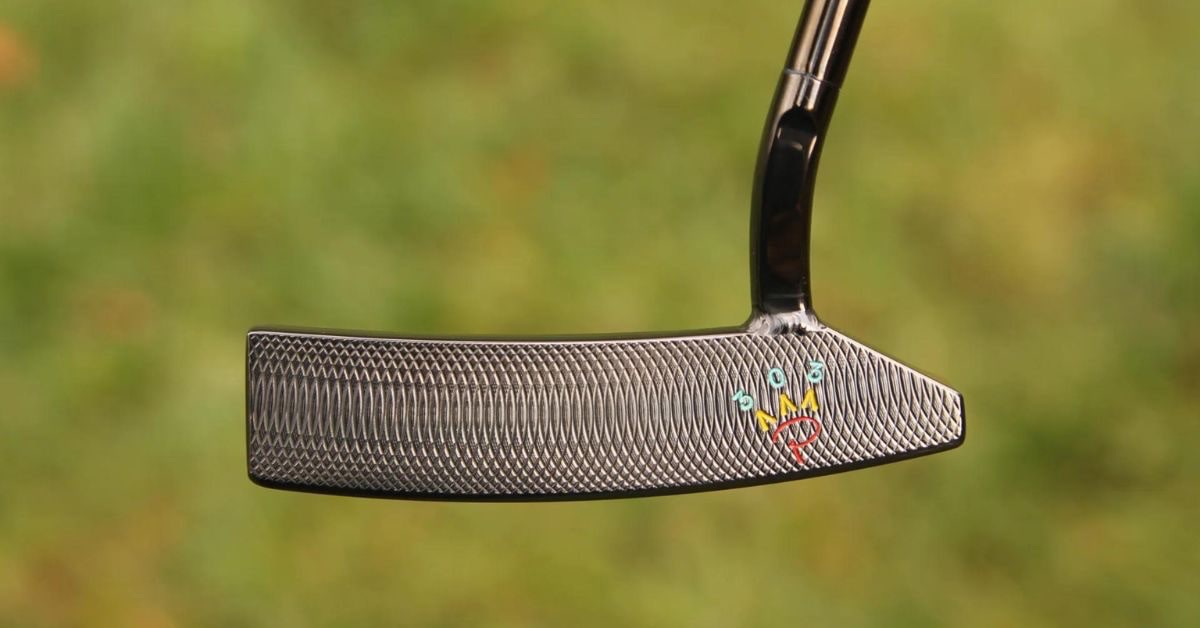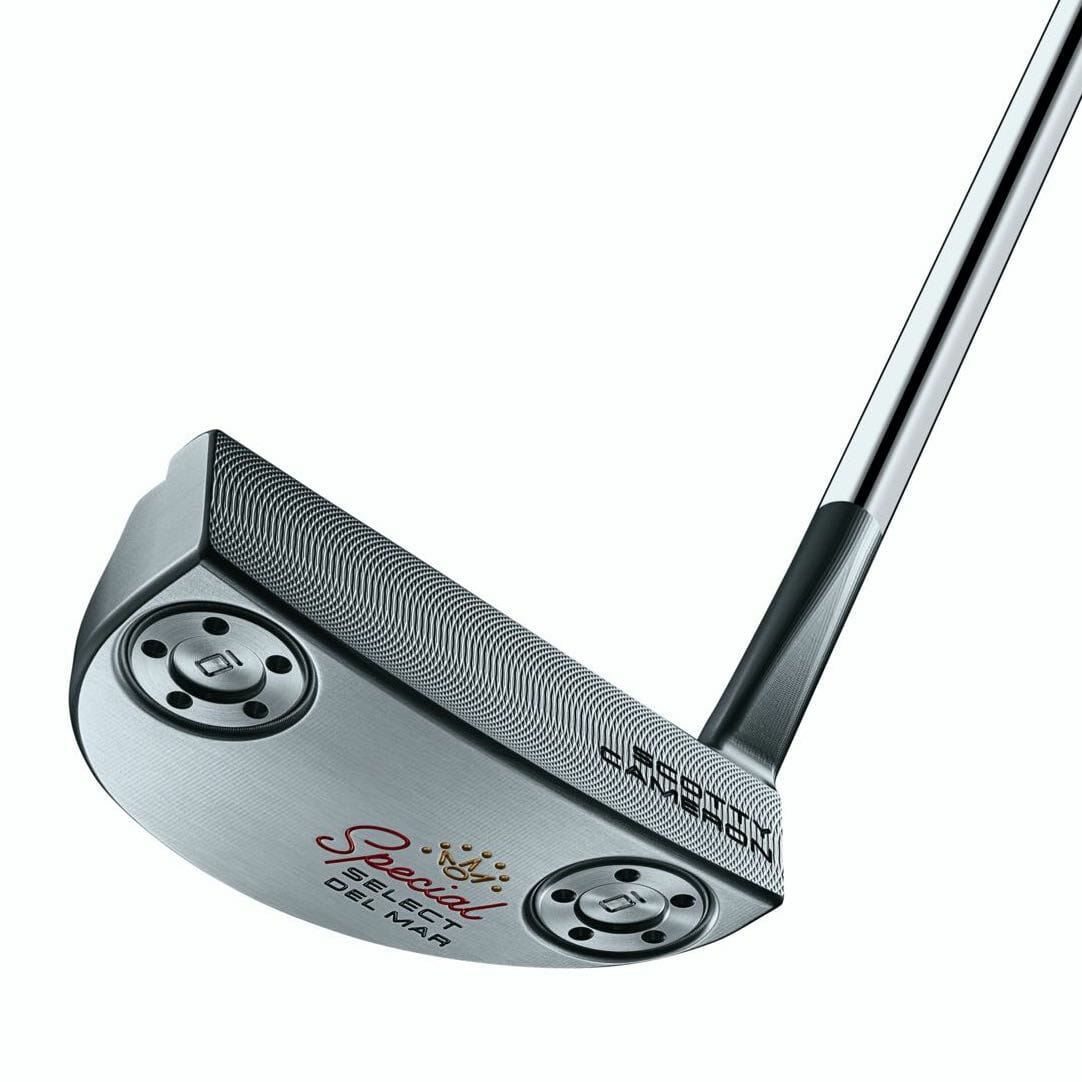The putter neck — where the shaft meets the head — can be a complicated topic.
Matching the correct putter neck to your unique stroke can make a huge difference to your golf game, and give you the confidence to make a great roll every time.
In this article, you’ll learn what a flow neck putter is. Then, you can choose from our favorite flow neck putters, and decide whether to add one to the bag.
What is a Flow Neck Putter?
With a flow neck putter, the hosel connects the putter shaft to the head with a single sweeping curve. This offsets the face behind the shaft line to allow the hands to sit forward. Flow neck putters often have lots of toe hang to encourage an arc stroke.
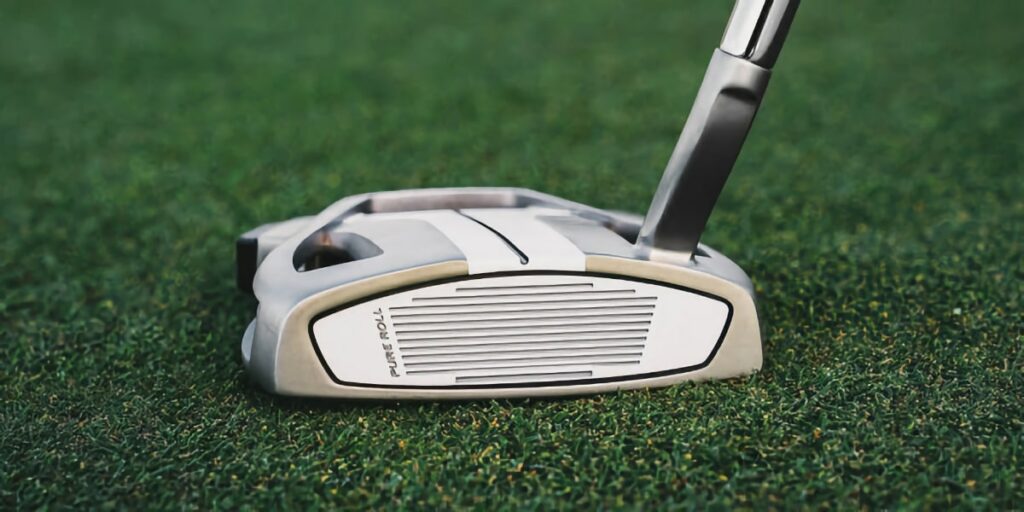
Flow neck putters are characterized by a seamless sweeping curve on the hosel that connects the putter shaft to the head of the putter.
This creates offset — where the putter face is set back from the line of the shaft by upwards of an inch. Essentially, offset helps you keep your hands ahead of the ball through the stroke, naturally squaring up the face at the point of contact.
However, too much offset can result in pulled putts left of the target line. So, to prevent this, flow neck putters are often designed with a decent amount of toe hang.
Put simply, toe hang is extra weight in the toe to prevent the face from closing.
Guerin Rife, CEO of Evnroll, explains that with a toe hang putter, “the putter head continues to lag, causing the putter head to remain open.”
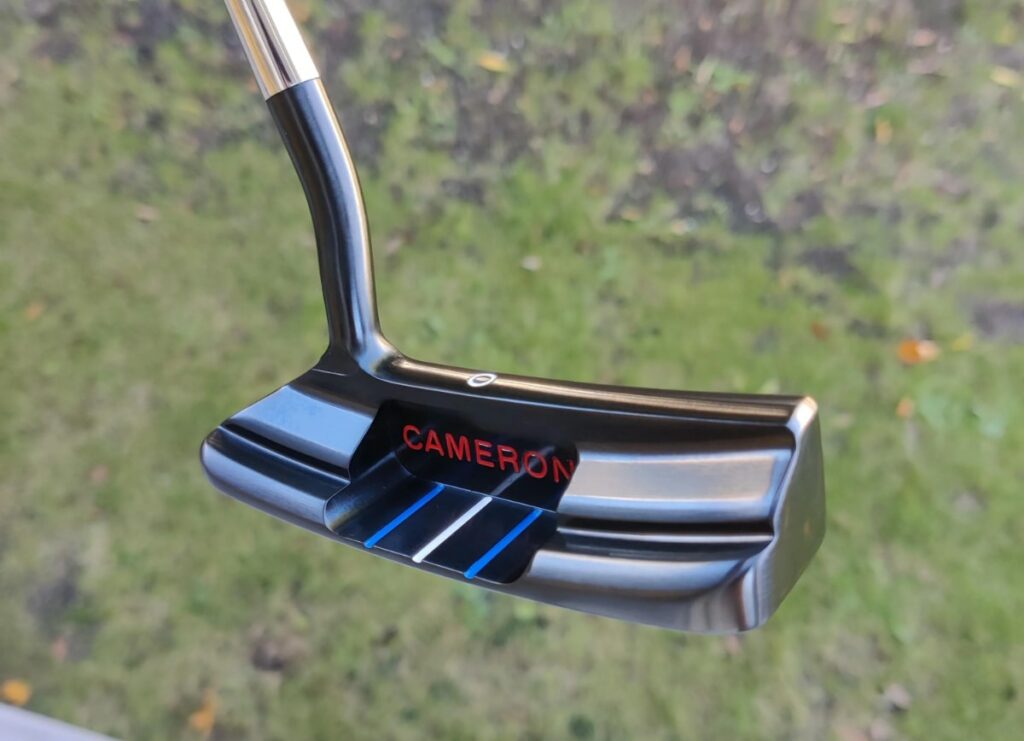
Who Is a Flow Neck Putter For?
Flow neck putters are typically suited to golfers with an arc putting stroke.
Since many flow neck putters are equipped with plenty of toe hang to balance out the offset, an arc stroke is needed to maintain a consistently square face at impact.
If you were to use a straight-back, straight-through motion with a flow neck putter, you’re susceptible to pushing putts right as the toe lags behind the heel.
I get on quite well with any flow neck putter as I have a natural arc in my putting stroke, having used a plumbers neck putter since I took up the game.
Flow Neck vs Plumbers Neck
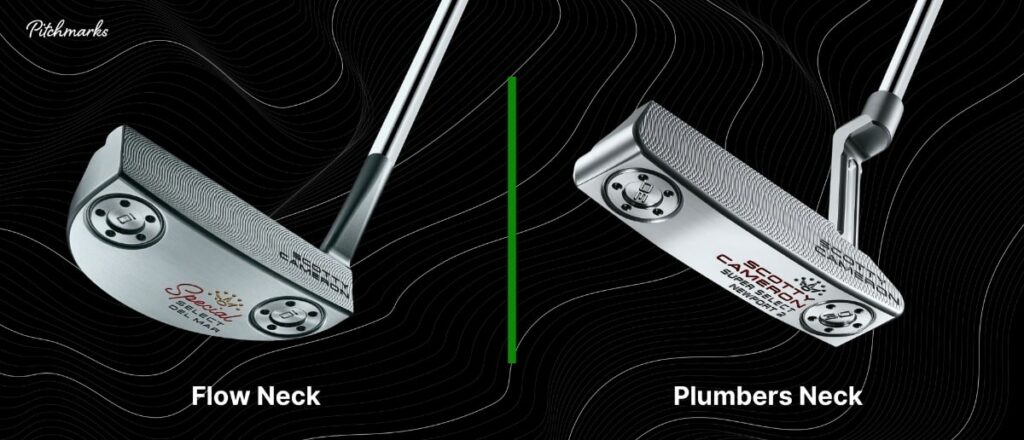
Flow neck putters often have similar levels of offset and toe hang to plumbers neck putters. However, the flow neck hosel type provides a sleeker look that can allow you to focus on making a smooth stroke against the ball, without risk of distraction.
| Flow Neck | Plumbers Neck | |
| Offset | Moderate | High |
| Toe Hang | High | Moderate |
| Stroke Type | Arc | Arc |
Plumbers neck putters are characterized by a horizontal bend in the hosel, rather than a subtle bend as found in flow neck putter variations.
Personally, I use a plumbers neck putter as I grew up using an original Ping Anser. There are also lots more available on the market compared to flow neck hosel types.
That said, many golfers find the sleek look of the flow neck more appealing.
PRO TIP: Plumbers neck putters are best suited for players who have an arc in their putting stroke.
Flow Neck vs Slant Neck
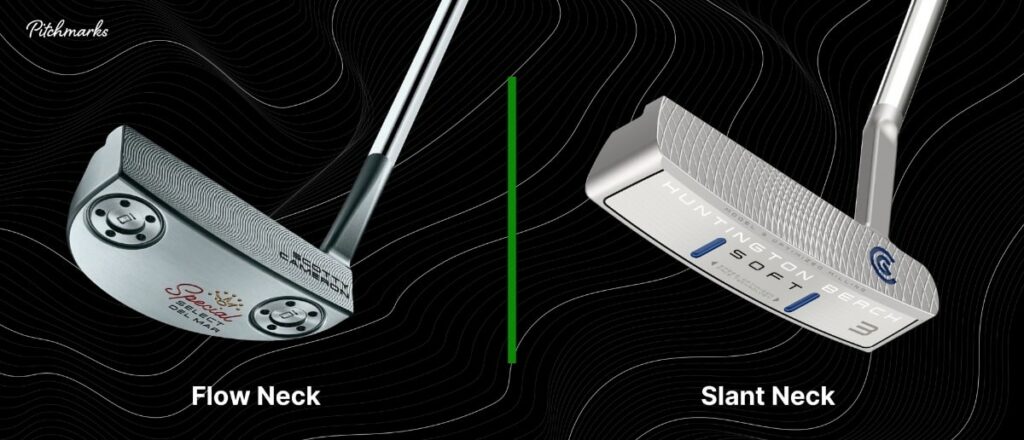
While flow neck putters feature a subtle bend in the hosel, slant neck putters have more of a sharp bend. They are very similar in terms of looks and performance.
| Flow Neck | Slant Neck | |
| Offset | Moderate | Moderate |
| Toe Hang | High | Moderate |
| Stroke Type | Arc | Arc |
Often, slant neck putters have slightly less offset than flow neck putters.
This is because the angle formed in the hosel bend is smaller, which offsets the putter face back from the line of the shaft by a smaller amount.
Ultimately, a flow neck putter will perform very similarly to a slant neck putter. It’s mainly about personal preference as to which you choose to go with.
PRO TIP: Slant neck putters are best suited for players who have a slight arc in their putting stroke.
Flow Neck vs Single Bend

With a flow neck putter, the bend occurs in the hosel. But with a single bend putter, there is no hosel and the smooth bend happens on the shaft itself.
| Flow Neck | Single Bend | |
| Offset | Moderate | High |
| Toe Hang | High | Zero |
| Stroke Type | Arc | Straight-back, straight-through |
Often, with single bend putters the bend occurs further from the head. This allows for a more unobtrusive view of the ball, which is preferred by many golfers.
However, due to the nature of the bend, single bend putters have zero toe hang and are primarily suited to those who have zero arc in their putting stroke.
Usually, single bend putters are mallets as opposed to blades.
PRO TIP: Single bend putters are best suited for players with a straight-back, straight-through putting stroke.
Flow Neck vs Double Bend
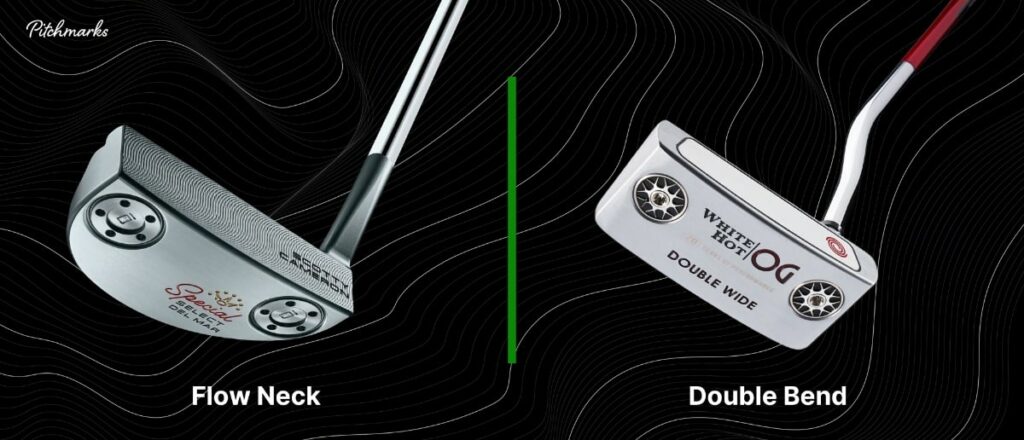
Similarly to single bend putters, double bend putters have no hosel. Instead, the offset is formed by two subtle bends at the base of the shaft itself.
| Flow Neck | Double Bend | |
| Offset | Moderate | High |
| Toe Hang | High | Zero |
| Stroke Type | Arc | Straight-back, straight-through |
While a flow neck putter produces offset from a relatively close bend to the face, double bend putters have the bends occurring further up the shaft.
Once again, this type of putter is best for those who putt without an arc in their stroke.
Having used a plumbers neck blade putter for most of my golf career, it always feels strange when I test out single or double bend putters! The sensation of drawing the putter head back and through without any arc can take some getting used to.
PRO TIP: Double bend putters are best suited for players with a straight-back, straight-through putting stroke.
Check out the video below by Golfbidder, which summarizes the various types of putter necks to help you decide which is most likely to suit your stroke:
Best Flow Neck Putters
So, by now you know precisely what characterizes a flow neck putter — along with how it compares to the other putters that are available on the market today.
Below, you’ll find three of the best flow neck putters to choose from:
TaylorMade Spider X HydroBlast #9 Putter
An excellent mallet option, with a flow neck to suit a slight arc stroke.
For those golfers who seek a bit of extra forgiveness and stability in their stroke, the TaylorMade Spider X HydroBlast #9 putter offers everything you need — and more.
With a soft face insert, it produces a consistent roll and a satisfying sound with every stroke. It’s perfectly weighted, and the flow neck hosel is ideal for players who are after a mallet head but prefer to putt with a slight arc in their stroke.
Scotty Cameron Super Select Del Mar Putter
A classic putter style, with a premium Scotty Cameron finish.
The Scotty Cameron Super Select Del Mar has a mid-mallet head shape that sits somewhere between a traditional blade and a modern mallet design.
Designed with a flow neck hosel and lots of toe hang, this putter is ideal for a player who has lots of arc in their putting stroke.
Cleveland Frontline 2.0 Putter
Another mid-mallet, but with a friendly price tag.
With a very similar head shape to the Super Select Del Mar, the Cleveland Frontline 2.0 offers a classic look but with an all-black finish.
It’s designed with a soft face insert for a great feel and consistent speed control, along with tungsten forward weighting and an altered CG for improved stability.
Final Thoughts
In summary, a flow neck putter is one where the hosel has a seamless bend to link the shaft to the head. This offsets the putter face behind the line of the shaft.
Essentially, the natural offset helps you keep your hands ahead of the ball throughout the stroke, encouraging a slight arc aided by a reasonable amount of toe hang.
I highly recommend you test out several putter types before settling on one. That way, you can see which works best with your stroke.

